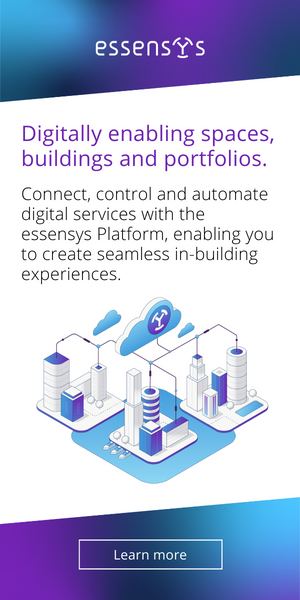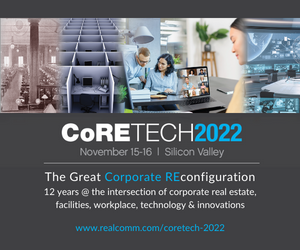The Importance of IAQ and Healthy Air in Buildings

This article is designed to help building owners, facility managers and engineers - no matter the age or condition of their HVAC equipment, controls or building automation systems - frame the questions related to assessing and optimizing indoor air quality (IAQ). Despite new obstacles created by COVID-19, the post pandemic world has also created new opportunities to enhance building health and competitiveness in creating a healthy environment.
IAQ measures the health and comfort of a building’s interior air, focusing on the presence of contaminants such as particulate matter (on which viruses such as SARS-CoV-2 are sometimes found), carbon monoxide and volatile organic compounds (VOCs). Particulate matter is a combination of solid particles and liquid droplets that may include dust, pollen and smoke. VOCs are ubiquitous (and often odorous), arising from cleaning agents, air fresheners, new carpets and more. HVAC strategies can have a significant impact on reducing these contaminants in the built environment.
Poor IAQ can lead to headaches, fatigue, lack of concentration, and irritation of the eyes, nose, throat and lungs. Conversely, IAQ optimized for VOCs, carbon dioxide and outdoor air ventilation has been shown to significantly improve cognitive functioning of office workers across nine measurements - including crisis response, information usage and strategy.
As sensors have become more accurate and affordable, building owners and facility management are now able to measure nearly every important attribute of IAQ. Sensors for carbon monoxide, particulate matter, VOCs and other contaminants can be set to track conditions over time and programmed for threshold alarms.
The extraction and analysis of this rich data allows key building stakeholders to gain valuable insights to balance optimum IAQ against energy consumption and occupant comfort within their buildings. Applying these data insights and better managing the building will require close collaboration between the building owner’s engineering and operations team and their outside HVAC engineers.
Smart Questions for Approaching IAQ and Taking Steps Towards Healthier Air
Regardless of the age of the building, the condition of the HVAC equipment or the complexity of the built environment, optimizing IAQ and occupant safety begins with a common set of questions. Some of these questions can be answered by the building owner or engineer, while others must be determined in consultation with an HVAC-solutions engineer. These common questions include the following:
- What goals has ownership set for IAQ and occupant safety? These goals may include reducing the chance for virus transmission, improving the IAQ of the built environment, increasing employee productivity, enhancing comfort, and others - or a combination of several of these goals.
- Are there existing problems with the facility that the ownership is trying to solve? What success have they had, and how are they measuring their progress? What steps, if any, have they already taken to improve their post-pandemic, built environment?
- How does ownership anticipate occupancy levels and workflows to change from pre-pandemic times? What new obstacles and opportunities do they need to address?
- If achieving ownership goals requires capital investment or new operating expenses, do owners have the budget available?
- Is there “low-hanging fruit” for energy savings that can help fund any new solutions? (Often these opportunities can be identified in a low-cost, visual assessment of equipment.)
- Are there tax incentives to assist with HVAC capital expenditures?
- What is ownership’s time frame? Are there actions that must be taken immediately and others that can be done in stages over time?
- What are the next steps for moving forward?
- What are the ongoing equipment service and maintenance plans to ensure optimum and sustainable building IAQ? Are there documented standard operating procedures in place to ensure this?
The Future of Healthy Air Starts with Abound by Carrier
Carrier created Abound knowing the challenges of and questions surrounding IAQ in a post-pandemic world. With the Abound Healthy Air offering, customers can better understand their building’s air quality. Abound aggregates, analyzes and visualizes data collected from various building systems, equipment and sensors in a single, integrated digital interface. It provides real-time insights about key air quality metrics and compares them against the WELL Building Standard™. Now customers can monitor building health, safety and performance data that they can act on to improve occupant health and well-being as well as provide them the confidence to be indoors.
This Week’s Sponsor
Yardi® develops and supports industry-leading investment and property management software for all types and sizes of real estate companies. Established in 1984, Yardi is based in Santa Barbara, Calif., and serves clients worldwide. For more information on how Yardi is Energized for Tomorrow, visit yardi.com.
Read Next
 5/15/2025
5/15/2025
Tech, Talent and Transformation: 2025 Digie Finalists Announced For 27 years, Realcomm has presented the Digie Awards to acknowledge companies, real estate projects, technologies, and individuals that have advanced the commercial real estate industry through the strategic use of technology, automation, and innovation.
 5/15/2025
5/15/2025
Empowering Space Management with Data-Driven Visualization For effective CRE space management, it’s critical to centralize lease data, maximize rental square footage (RSF), improve energy efficiency and reconfigure spaces to meet changing needs.
 5/8/2025
5/8/2025
The AI-Powered Workplace Evolution: Redefining the Business Landscape In today's rapidly evolving business environment, the fusion of Artificial Intelligence (AI) and Workplace Management is revolutionizing the way organizations approach workspace optimization and operational efficiency.
 3/27/2025
3/27/2025
The Convergence of Edge Computing, Cloud, and AI in Building Automation and Smart Buildings In the built environment, we have seen the convergence of Operational Technology (OT) and Information Technology (IT), later expanding to include Workplace Technologies (WP).







%20(1)%20(1)%20(1).png)






